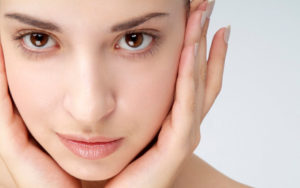What’s Better: Mandelic Acid versus Glycolic Acid
GREAT NEWS FOR ADULT/TEEN ACNE
Mandelic Acid has become the “new kid on the block” when it comes to facial care. Mandelic is an alpha hydroxyl acid (AHA) named after an extract of bitter almonds. Trials have found this acid to work great in treating inflammatory noncystic acne, suppressing pigmentation, and rejuvenating photoaged skin. Glycolics can be irritating; but because of mandelic acid’s larger molecular structure, it penetrates the skin more slowly resulting in less irritation. This, in addition to its antioxidant, anti-bacterial and natural brightening properties, makes it ideal for all skin types, and just plain ideal.
For Aging & Fine Wrinkles
Fine wrinkles and lines appear to improve, much like photoaged skin does with the use of 10% glycolic acid preparations. Skin texture improves quickly within days or weeks in characteristic AHA therapeutic fashion. A notable difference between glycolic acid and mandelic acid products is the lack of skin irritation. As with glycolic acid, the effect is sustained over months and years of treatment, with gradual and continued improvement in fine lines and wrinkles being the characteristic benefit. It is noteworthy that a remarkable difference was seen in the treatment of darkly pigmented skin types.
Improvement can be seen in fine wrinkles and lines in patients with Fitzpatrick skin types I through VI without any post inflammatory hyperpigmentation. It accelerates cell renewal by dissolving the glue-like structure that binds skin cells to slough off dead cells and accelerate cell renewal making skin appear lighter, brighter, firmer and smoother. At the same time, it promotes collagen production to increase skin’s elasticity and youthful appearance.
For Chemical Peels
Sensitive, pigmented, and darker skin types can benefit from different percentages of mandelic acid peels.
Lasting Image Face and Body carries 5%, 8%, 11% and 15% solutions for home care, and also different percentages used during chemical peels that prove effective for different skin types and goals.
For Pigmentation
Pigmentation including melasma, post inflammatory hyperpigmentation, and lentigines, improved quickly when treated with mandelic acid products. In many patients, melasma improved up to 50% after 1 month of treatment using 10% mandelic acid lotion.
Faintly pigmented lentigenes respond much more slowly-a result characteristic of treatment with other AHA products-with gradual fading over a period of weeks or months. Mandelic acid products used with prescription-strength bleaching agents containing hydroquinone or kojic acid also showed excellent fading with no adverse effects, and may hasten the benefits of treatment.
For Acne
Mandelic acid has become a go to product especially for those experiencing acne and pigmentation and scaring. Depending on the desire effect, mandelic not only comes in different percentages in serum form, but also as a wash and a scrub. Patients with gram-negative folliculitis also showed improvement while using mandelic acid products.
Many acne clients who are resistant to antibiotics given both systemically and topically have responded very well to the mandelic acid. Initial research on mandelic acid was predicated on its antibiotic nature. It was hoped that an improvement in wrinkles and acne could be obtained for patients who suffered from both. Many clients have been able to control their acne with mandelic acid products alone (i.e., without using traditional acne products). Mandelic acid has been found to be especially useful in treating adult female patients suffering from both photoaging and acne. Some acne rosacea patients were also treated, and their conditions showed improvement.
Lasting Image follows the practice of trying one product at a time for a couple days and assess the skin’s response. It is fortunate we have effective formulas available without loss of time needed for a complex protocols, or taking medications that once were so quickly prescribed.




 Lasting Image Face & Body
Lasting Image Face & Body